20 U.S. Cities With the Most Beautiful Old Houses

From the wraparound porches of Southern mansions to the ornate details of Victorian row houses, historic homes have captured the imagination of Americans in a big way. Fueled by the popularity of shows like HGTV’s Home Town and social accounts like Cheap Old Houses, a new generation of travelers is trading in flashy hotels for charming neighborhoods lined with architectural gems—and even planning entire getaways around them.
In fact, Google searches for “historic homes for sale” have skyrocketed in recent years, and interest in heritage tourism is booming, especially among Millennials and Gen Z. According to the National Trust for Historic Preservation, communities that prioritize preservation often see boosts in both tourism and local pride.
So, whether you’re a passionate preservationist, an old-home dreamer, or just someone who appreciates the craftsmanship of centuries past, these 20 U.S. cities are sure to satisfy your love of history and architecture, according to travel experts. From cobblestone streets and coastal mansions to charming bungalows and city icons, these destinations offer a walk back in time—no time machine required.
RELATED: 12 Best U.S. Cities to Visit for History Buffs
1
Newport, Rhode Island
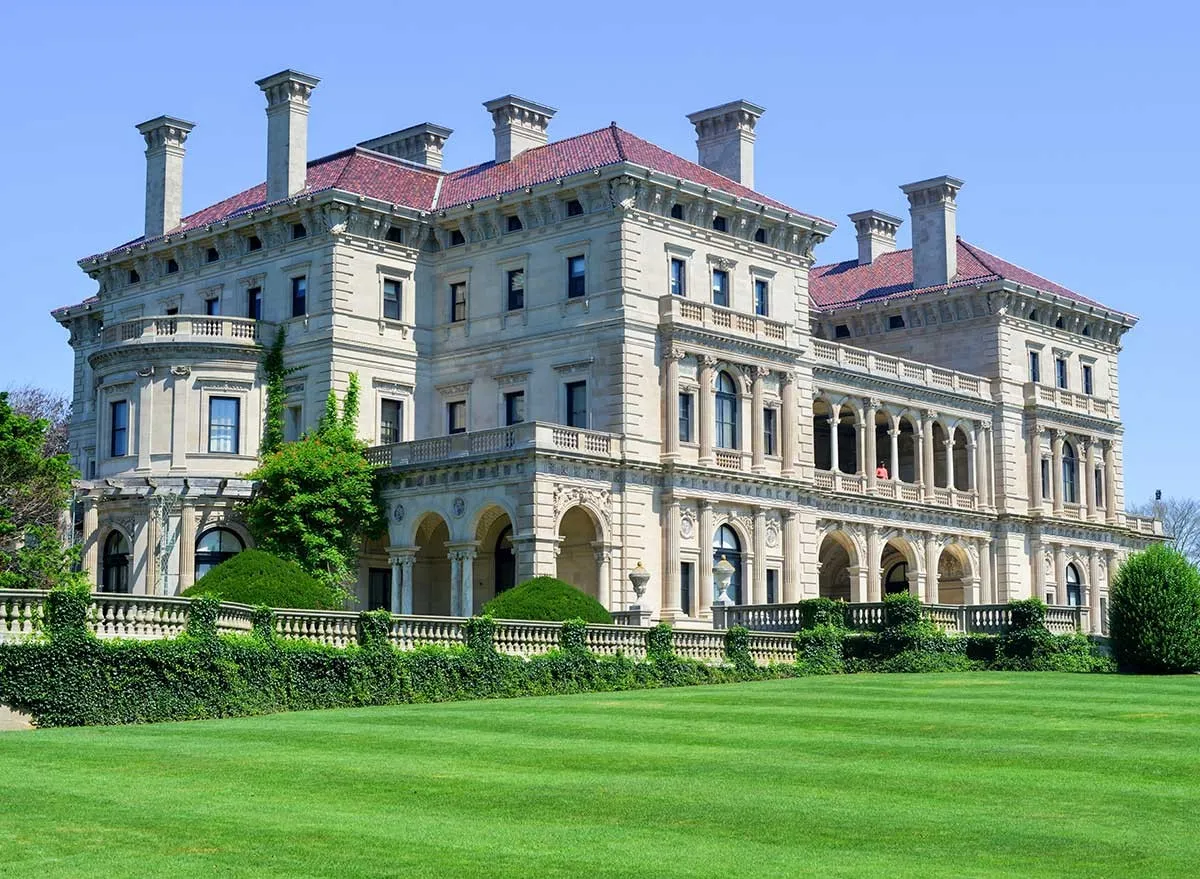
To call the historic residences in Newport “houses” would be a gross understatement. The coastal Rhode Island city is known for the Gilded Age mansions that once served as summer getaways for tycoons from New York and Philadelphia, most notably the Vanderbilts. (You may have heard that much of HBO’s hit show The Gilded Age was filmed in these exact mansions.)
Today, 11 of these opulent homes have been preserved and are open to the public for tours through the Preservation Society of Newport County. Trudy Coxe, the CEO and executive director of the society, says the one can’t-miss home is The Breakers. “No one in Newport ever outdid this 138,000-square-foot summer ‘cottage’ for Cornelius Vanderbilt II and his wife, Alice.” It has 70 rooms (including an imposing great room with 50-foot ceilings), 27 fireplaces, and marble everywhere.
For landscape architecture lovers, The Elms is a must-see. The Classical Revival gardens feature marble pavilions, fountains, and incredible elm trees.
Another fun way to view the historic mansions is the 3.5-mile Cliff Walk, a National Recreation Trail along the ocean from which you can see both the house museums and gorgeous private homes (do note that some sections are rocky and are more of a hike).
And in Newport’s main downtown area, meander the residential streets to see 18th-century clapboard houses in a nautical setting.
2
Old Town Alexandria, Virginia
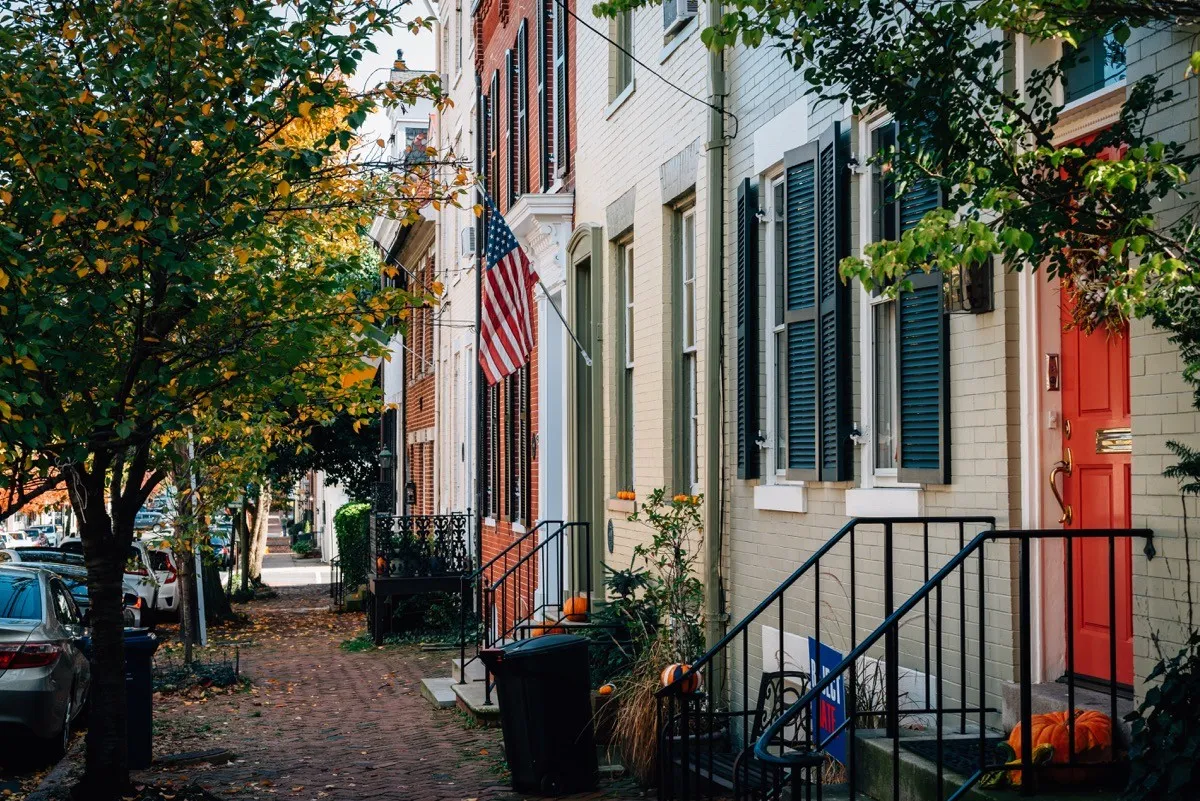
Across the Potomac River from Washington, D.C. is Alexandria, Virginia, which was founded in 1749 by Scottish merchants. It’s perhaps best known for being the adopted hometown of George Washington, but as Visit Alexandria notes, there is also a dark side to its past, as it “served as one of the largest domestic slave trading ports in America.”
All of this history is on view in Old Town Alexandria, a nationally designated historic district along the river. Brick streets and cobblestone alleys are lined with adorable Georgian- and Federal-style homes (more than 200 structures were built before 1820), and there are 140 sites tied to the country’s first President, according to Visit Alexandria.
If you’re on the hunt for that one amazing Instagram photo, Rebecca Doser, director of communications at Visit Alexandria, says to head to the Spite House. At seven feet wide, it’s the skinniest house in the U.S. “Visitors can pose with arms wide in front of the doorway or capture Spite House squeezed between its white and red neighbors from across the street,” suggests Doser.
3
Santa Fe, New Mexico
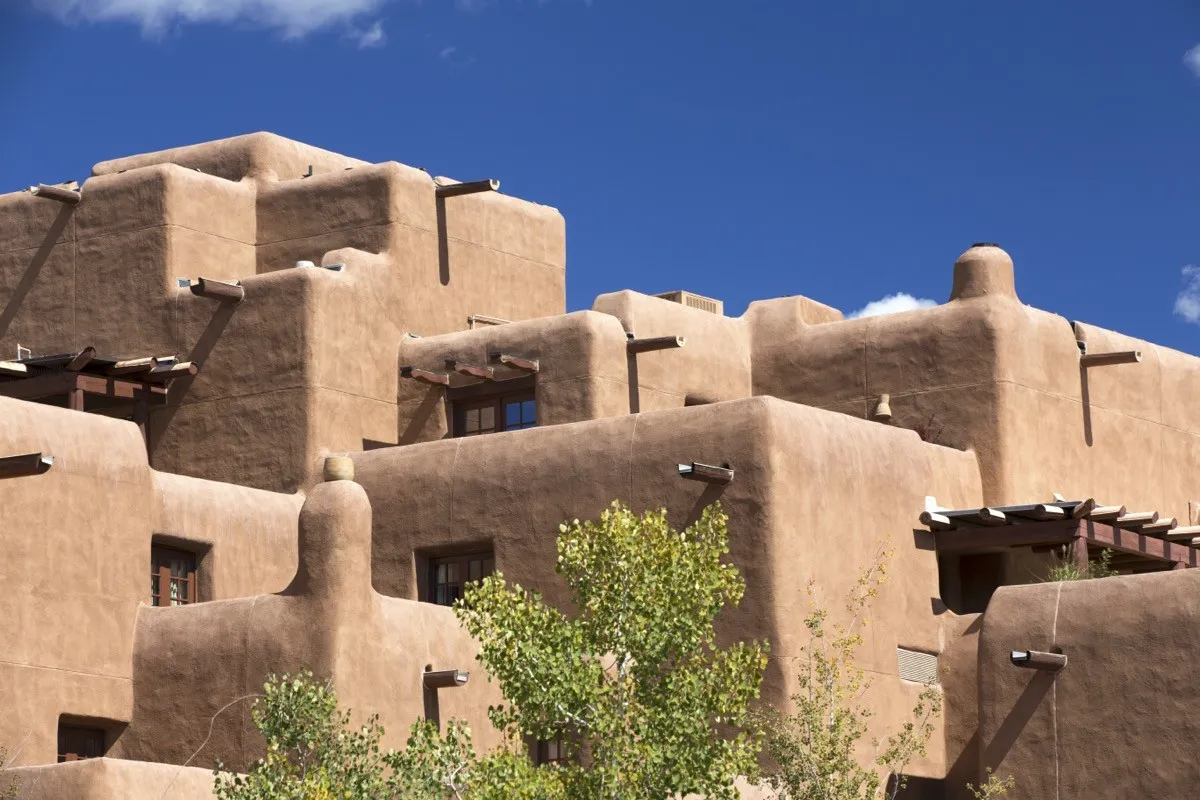
Though many old-house destinations are located along the East Coast, the Southwest should not be overlooked.
“The architecture in Santa Fe is distinct, marked by adobe buildings that reflect its Native American and Spanish roots,” shares Devaki Das, a former architect and the founder of Weave a Thousand Journeys. “This earthy, sun-baked look gives the city a truly unique aesthetic, and it should be noted that the adobe architecture here is among the oldest in the U.S!”
Das says one of the best ways to appreciate these historic structures is with a scenic drive: “Officially known as the NM State Road 14, the Turquoise Trail offers a stunning alternative to the more direct I-25 highway between Albuquerque and Santa Fe. This route is richly steeped in history, art, and panoramic views that will take your breath away.”
Two must-visit stops along the way are the Georgia O’Keefe Home and Studio in Abiquiú and the Palace of Governors, a 17th-century Pueblo adobe building that was originally Spain’s regional seat of government and is today a living history museum.
In Santa Fe proper, there are over 102 properties registered with the Historic Santa Fe Foundation, Das notes.
One of her favorites is the Director’s Residence, Laboratory of Anthropology, designed by the famous architect John Gaw Meen, often called the “Father of Santa Fe Style” because he was “instrumental in popularizing the Pueblo Revival style in the early 20th century,” she shares.
Das also recommends visiting the José Alarid House, which “exhibits styles and building materials transported to the region on the railway lines that arrived in New Mexico in 1880,” as well as the Gustave Baumann House by Santa Fe architect Charles T. Gaastra, which “blends the local Spanish Pueblo Revival Style with the Territorial Style and Baumann’s own playful decorative touches.”
4
Honolulu, Hawaii

There’s plenty more to do and see in Honolulu than visit the capital city’s iconic beaches. In fact, Michael Barker of Aloha Secrets says Hawaii, in general, does a great job preserving historic homes by offering property tax exemptions to those with qualifying properties.
“One cluster of these homes is in the Historic Ewa Villages neighborhood, where the plantation workers of the sugar cane fields of Ewa used to call home,” Barker shares. “Every home in the community has renovation restrictions in order to keep the historic nature of the neighborhood.”
You may also want to visit the Tantalus neighborhood. Located in the Ko’olau Mountains, it’s “one of the few residential areas within a State of Hawai’i Conservation District,” according to the Tantalus Community Association.
While here, you can tour the Liljestrand House, an “outstanding example of architect Vladimir Ossipoff’s work and of mid-twentieth century Hawaiian modern architecture.”
One of the grandest historic sites in Honolulu is Iolani Palace. “A national historic landmark and the only official state residence of royalty in the United States, from 1882 to 1893 Downtown Honolulu’s ʻIolani Palace was the official residence of the Hawaiian Kingdom’s last two monarchs: King Kalākaua and his sister and successor, Queen Liliʻuokalani,” explains the Hawai’i Tourism Authority.
Palace tours include the throne room, imprisonment room, former Royal Guard barracks, and much more.
RELATED: 10 Small Towns in the U.S. That Feel Like You’re in a Hallmark Movie
5
Charleston, South Carolina
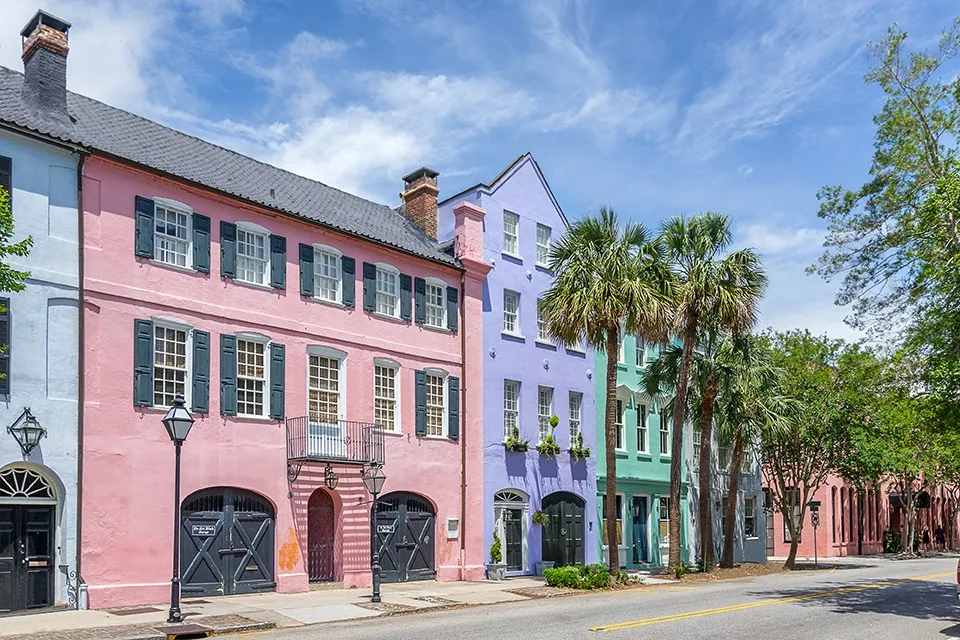
This list would not be complete without Charleston, South Carolina, the birthplace of U.S. historic preservation. Liza Holian, marketing and communications manager at the Historic Charleston Foundation, notes that “the history of Charleston spans over 350 years,” making it one of the oldest cities in the country.
As Holian explains, you can see homes dating to the 1700s along Tradd Street, or you can check out the waterfront mansions along the Battery. And while you’re wandering, you’ll find helpful “historic plaques and markers.”
For a quintessential photo, head over to Rainbow Row, a stretch of pastel-colored homes on East Bay Street near the Battery. Or you can go to the Pink House on Chalmers Street. The bubblegum-hued home is the oldest in the city and is made more photogenic by the cobblestone street it resides on.
Another site Holian says not to miss is the Nathaniel Russell House Museum. “The entire house has been restored to its 1808 glory, with each piece of furniture and China carefully curated to the most historically accurate interpretation.”
Within a short drive of Charleston are several plantations. You can take tours of the beautiful grounds, but, most importantly, you’ll learn about the lives of the slaves who lived and worked there. Some of the most popular are Magnolia Plantation, which was founded in 1676 and has stunning romantic gardens, Middleton Place, home to America’s oldest landscaped gardens, and Boone Hall, perhaps best known for its allée of oak trees and being featured in The Notebook.
6
Savannah, Georgia
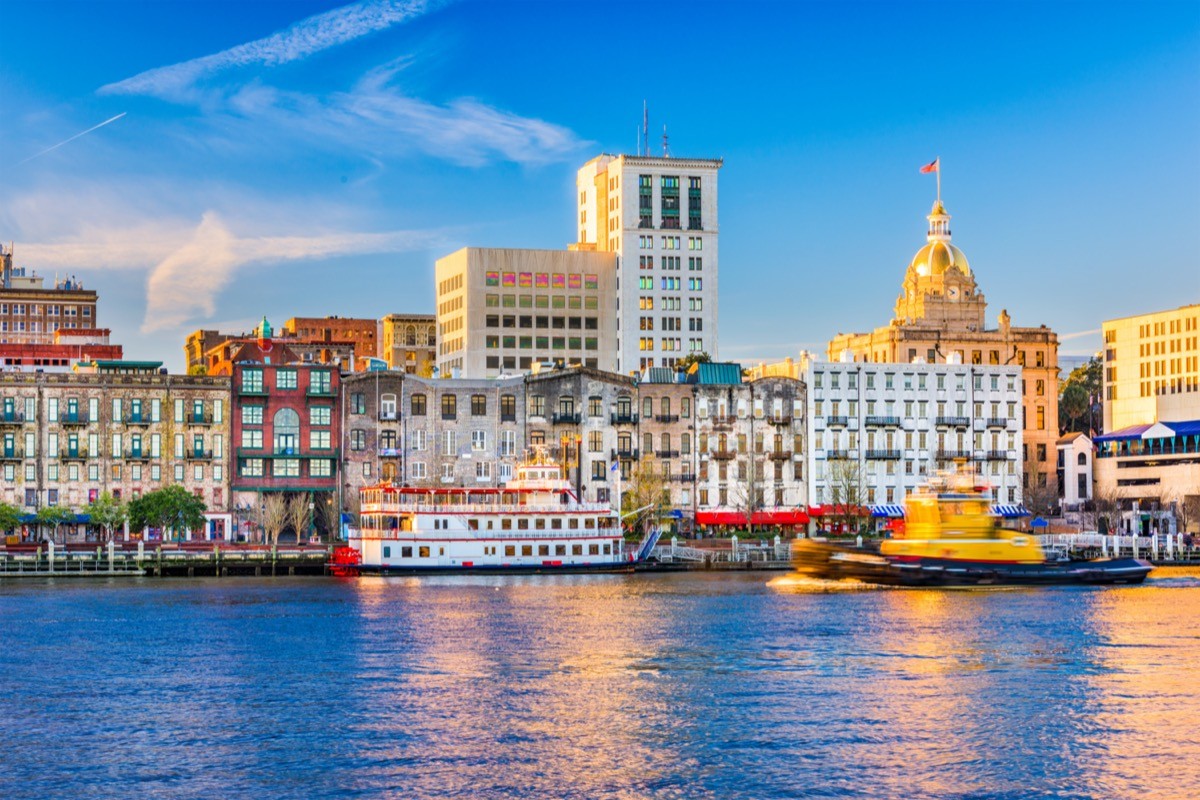
If you’re heading to Charleston, you can drive two hours south and add Savannah, Georgia to your old-house itinerary.
According to Visit Savannah, it exudes historic charm thanks to “cobblestone alleyways” and “quaint squares.” Add to that the city’s famous mossy oak trees, and you’ve got a romanticism unlike any other.
But for historic home lovers, what really makes Savannah worth a trip is its plethora of house museums open for tours. Erin Clarkson, author of the Savannah First-Timer’s Guide, recommends the Mercer Williams House: “The Italianate-style home was made famous by the book Midnight in the Garden of Good and Evil and is a popular tourist attraction.” She also suggests visiting the Owens-Thomas House & Slave Quarters. “It was one of the first homes in America to feature indoor plumbing (even before all levels of the White House were fully plumbed),” she explains. “The home also has a unique indoor bridge that connects rooms on the top floor.”
“Visitors can also take walking tours of the city’s many historic districts, such as the Victorian District and the Landmark Historic District, as well as trolley tours,” adds James Ian, experiential travel expert and founder of the online travel publication Travel Collecting. Clarkson specifically recommends Architectural Tours of Savannah.
Other historic attractions that Ian points out are Bonaventure Cemetery, River Street (where you’ll find tons of shops, galleries, and restaurants along the waterfront), and the famed 30-acre Forsyth Park, complete with fountains and gardens.
7
St. Augustine, Florida
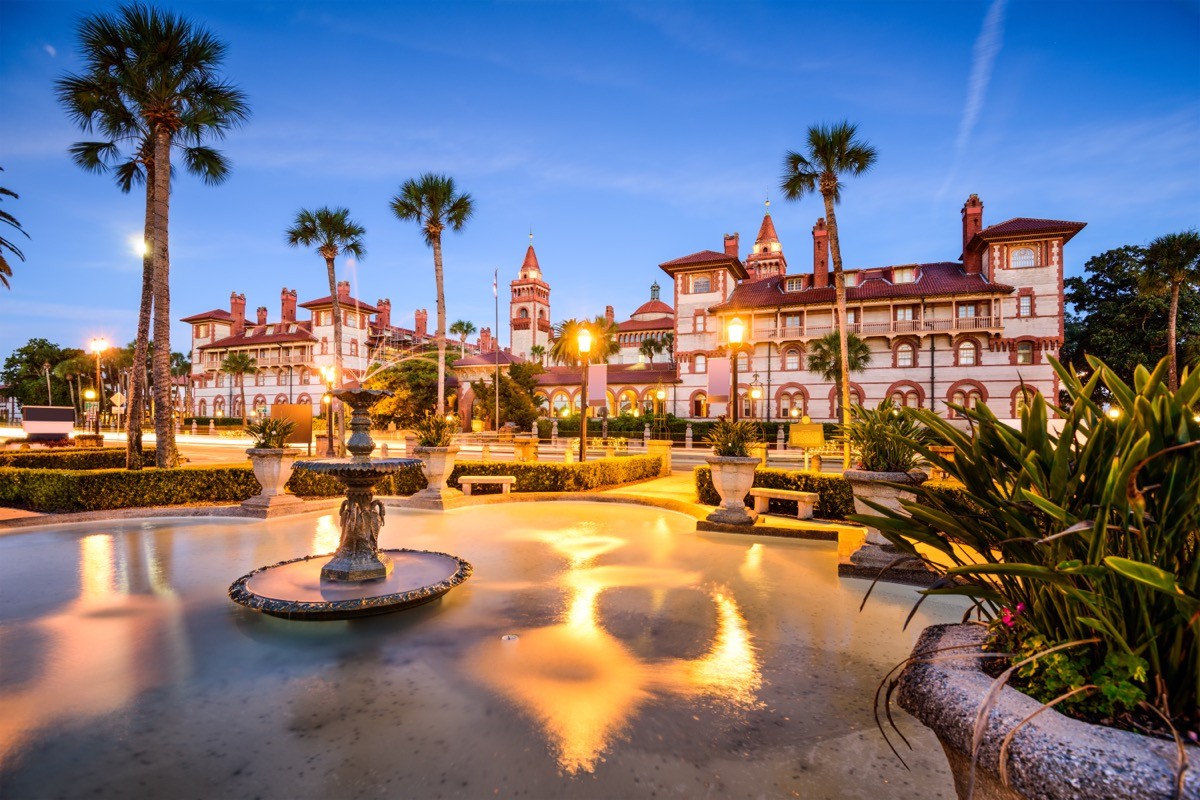
We’d be remiss not to include the oldest city in the country. St. Augustine was founded in 1565 by Spanish settlers, and today has seven National Register Historic Districts.
“The City of St. Augustine has a very strict preservation policy in place that protects the architecture that makes this one of the most beloved historic cities,” explains Barbara Golden, the communications and PR manager at Florida’s Historic Coast.
Golden notes that the Lincolnville neighborhood has the largest collection of historic homes. According to Florida’s Historic Coast, Lincolnville was founded in 1866 by newly freed slaves and later played a pivotal role in the Civil Rights movement.
In the downtown historic district, you can meander along side streets (which include the country’s oldest street and its most narrow) and see Spanish-style architecture, as well as the Oldest House Museum.
Like Newport, St. Augustine has its own Gilded Age history. Visitors can experience this at the Lightner Museum, the former site of the Hotel Alcazar resort, and the Villa Zorayda Museum, the one-time winter residence of a Boston millionaire who modeled his home after the Alhambra Palace in Spain.
History lovers also have the chance to spend the night in a historic home. “The St. Francis Inn is the oldest inn in St. Augustine, and it’s still in operation!” notes Betsi Hill, travel writer and founder of Betsi’s World. She also suggests The Collector Inn and Gardens, “nine buildings dating back to the 18th century [that] display the founder’s vast collection of art and antiquities.”
8
Natchez, Mississippi
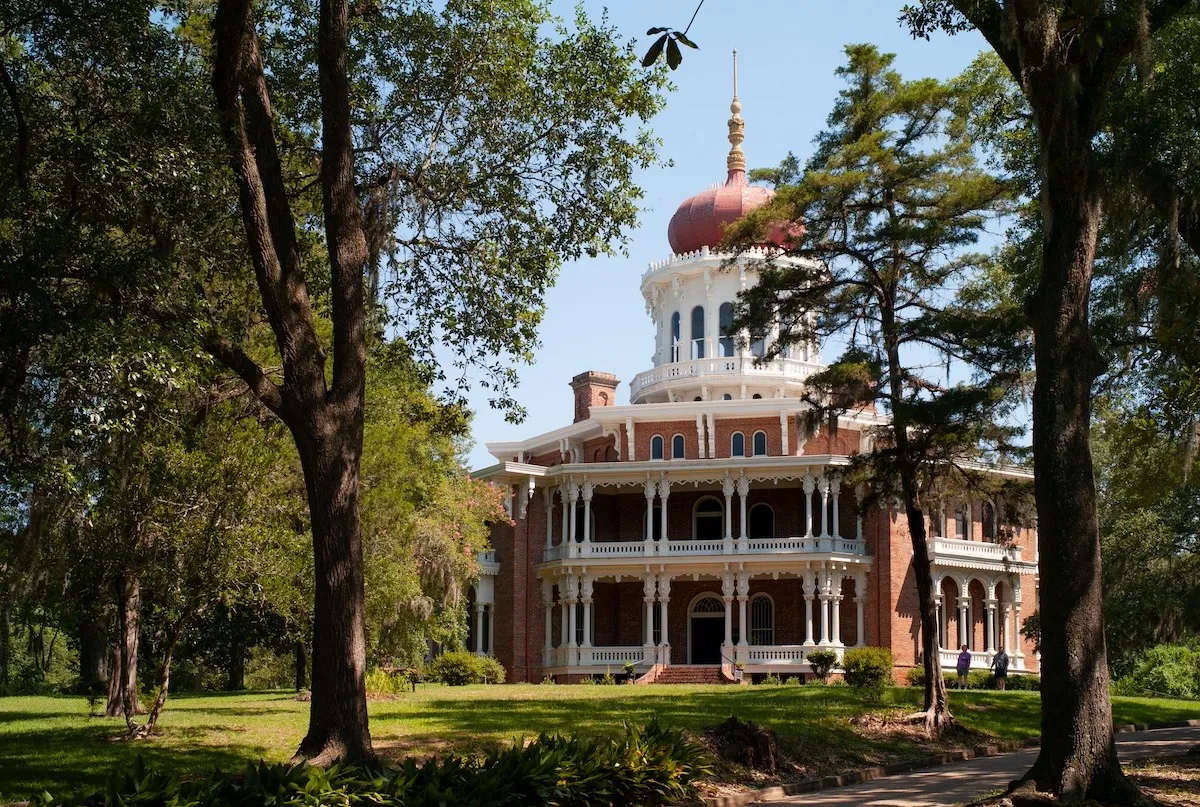
Established by French colonists in 1716, Natchez is the oldest city on the Mississippi River. “The city itself has more than 1,000 structures listed on the National Register of Historic Places, including over 40 authentic pre-Civil War homes and Victorian buildings all around town,” says Caroline Rogers, an account coordinator at the Lou Hammond Group, which represents Visit Natchez.
Though the area is certainly walkable, you can opt to take the National Park Service’s (NPS) driving tour of Civil War sites, which they estimate takes about 75 minutes. As Rogers notes, some of the sites you’ll see include the Auburn Museum & Historic Home, a Greek Revival residence that’s the oldest home in Natchez, and Magnolia Hall, “which dates back to 1858 and is the last mansion built downtown before the Civil War.”
Larry Snider, VP of operations of Casago Vacation Rentals, says you also can’t miss Longwood, a five-story mansion on 87 acres of land that’s considered the largest octagonal house in the U.S.
If you’d like to spend the night in one of these historic homes, Rogers says that many have been turned into bed and breakfasts, including Dunleith Historic Inn, Choctaw Hall, and The Guest House.
RELATED: The 12 Prettiest Small Towns in the U.S.
9
New Orleans, Louisiana

It’s hard to compare New Orleans to any other city in the U.S., which is why it’s that much more exciting to visit and experience its Creole culture and Spanish and French influences.
The city on the Mississippi River is probably best known for the French Quarter, the main tourist area that contains the infamous Bourbon Street. According to the French Quarter Management District, this area’s architecture has more of a Spanish influence, with its signature wrought-iron balconies and courtyards.
The other popular area to see historic homes is the Garden District, which is lined with stately mansions. Christopher Falvey, the co-founder of Unique NOLA Tours, says some of the can’t-miss sites here are the Buckner Mansion (of American Horror Story fame), the architecturally unique Monroe Adams House, the Walter Grinnan Robinson House (known for its two-story curved verandah), and the Brevard House (the former home of author Anne Rice).
A more off-the-beaten-path activity is walking around to see New Orleans’ famous shotgun houses. The design of these tiny homes came from Saint-Domingue (now Haiti). After the Haitian Slave Revolt in 1804, “thousands of free people of color migrated to New Orleans,” explains Falvey’s Unique NOLA Tours. You’ll find them concentrated in the Irish Channel and the Esplanade Ridge neighborhoods.
10
Tucson, Arizona
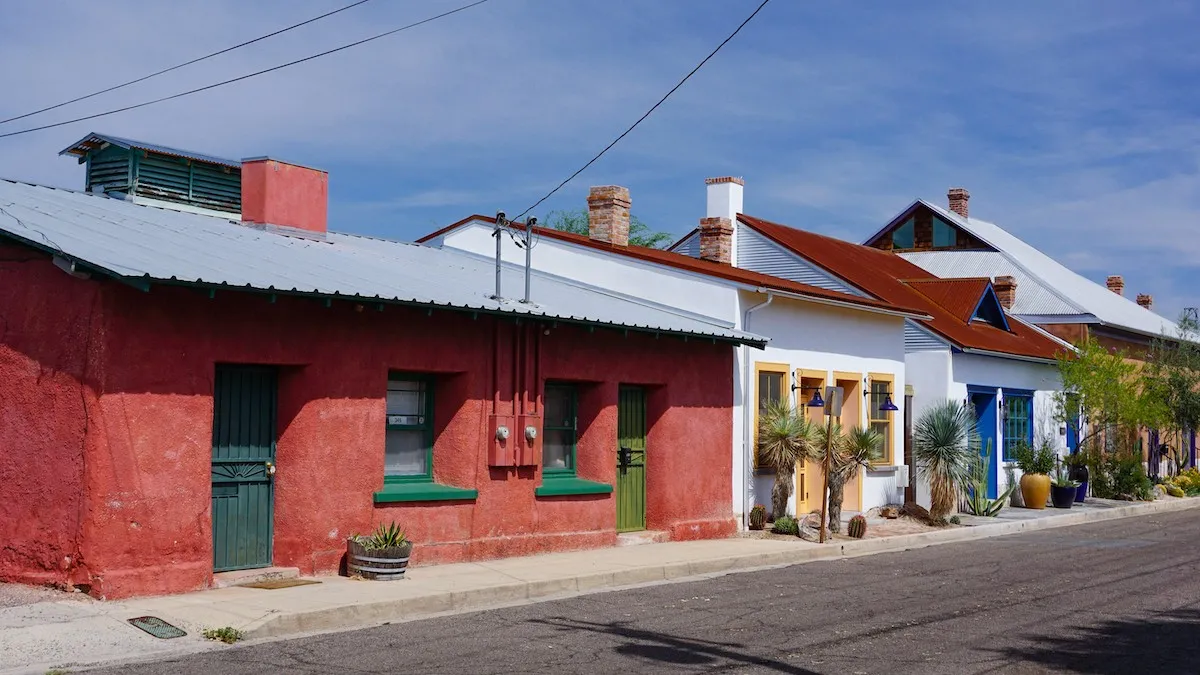
Not all historic homes have to date back as far as the 1800s. In Tucson, Arizona you can experience a wealth of “20th-century modern designs, including some of the Southwest’s best examples of mid-century architecture,” the team at Visit Tucson shares with Best Life.
And what’s really fun is that you can stay in a lot of these modernist gems. For example, the 1952 Ball Paylore House—”a one-of-a-kind home in midtown Tucson with a hexagonal shape and a passive solar design using a crescent-shaped patio and rotating sunshades,” according to Visit Tucson—is available through Airbnb. Also available is the 1977 Jacobson House. Located in the Catalina Foothills and made from concrete and glass, it’s “a perfect example of desert brutalism,” notes the tourism agency.
If this style of home interests you, consider booking your trip during the Tucson Historic Preservation Foundation’s annual Tucson Modernism Week, which features films, lectures, and other events celebrating this architectural style.
But modernism isn’t all the city has to offer. “In Tucson’s downtown area, you’ll also find many of the original Sonoran row homes built in the 1800s,” shares Visit Tucson. These one-story adobe houses date back to when Tucson was part of Mexico. The largest collection of these homes in the U.S. is in the Barrio Viejo neighborhood, which you can tour via the Presidio Museum.
Finally, a stroll down Main Avenue will introduce you to the Spanish Colonial and Mission Revival mansions where “Tucson’s wealthiest families lived in the 1860s to the early 1900s,” according to Visit Tucson.
11
Louisville, Kentucky
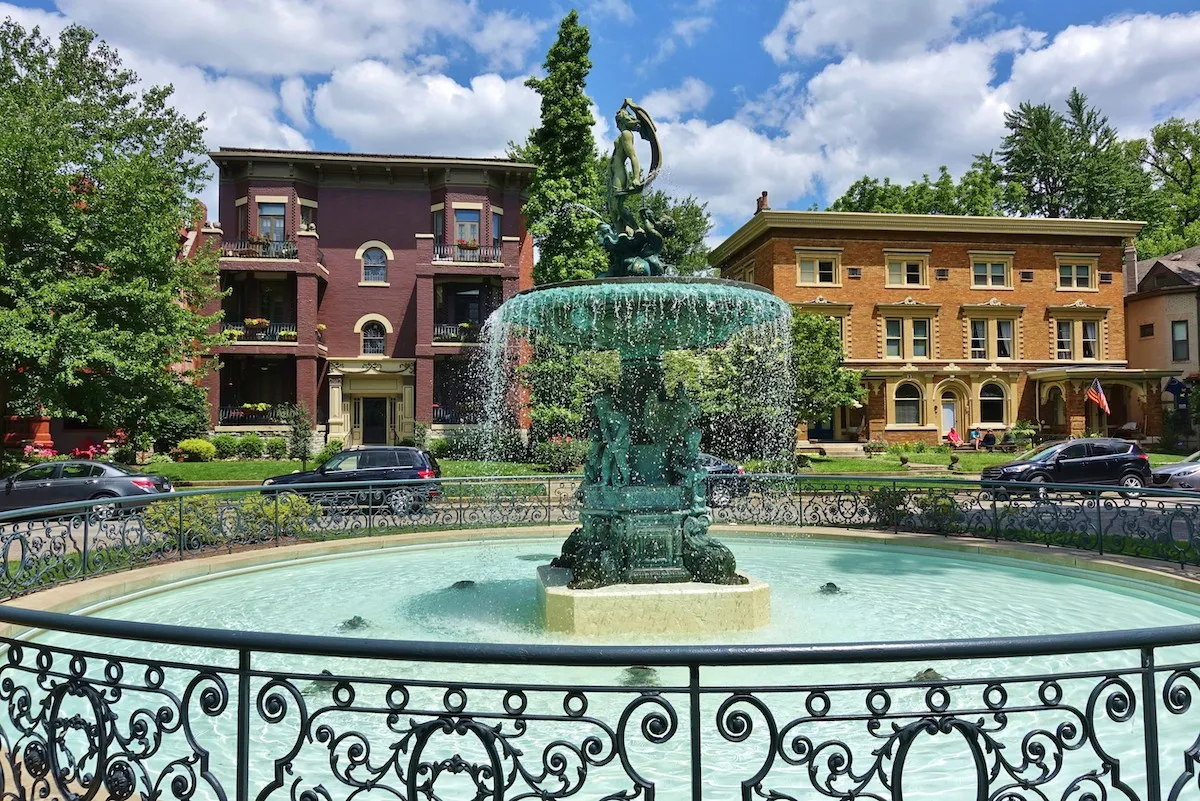
There’s a lot more to do in Louisville than drink bourbon and attend the Kentucky Derby, and one of these attractions is checking out historic homes.
“Just south of downtown, Old Louisville is known for having the largest contiguous collection of Victorian-era mansions in the United States,” notes Jordan Skora, marketing communications manager at Louisville Tourism.
Skora says one of the best ways to experience the city is by booking a walking tour through Louiseville Historic Tours: “The 90-minute tour will showcase a variety of building styles including Châteauesque, Richardsonian-Romanesque, Italianate, Victorian Gothic, and Queen Anne architecture.” You can also opt for the night-time Ghost Tour, “which talks about some of the more haunted dwellings,” Skora notes.
Several historic homes are available for interior tours, too. Skora points out Locust Grove, which “preserves a 1792 mansion, outbuildings, and 19th-century farmstead” and educates about the enslaved African Americans that once lived there.
Jocelyn Xamis Wolters, a preservation and co-founder of the travel site Wolters World, suggests the Conrad-Caldwell House Museum. “This castle-like home is a wonderful introduction to the Victorian architecture of the city and an example of Richardsonian Romanesque at its best,” she says.
12
Columbus, Ohio
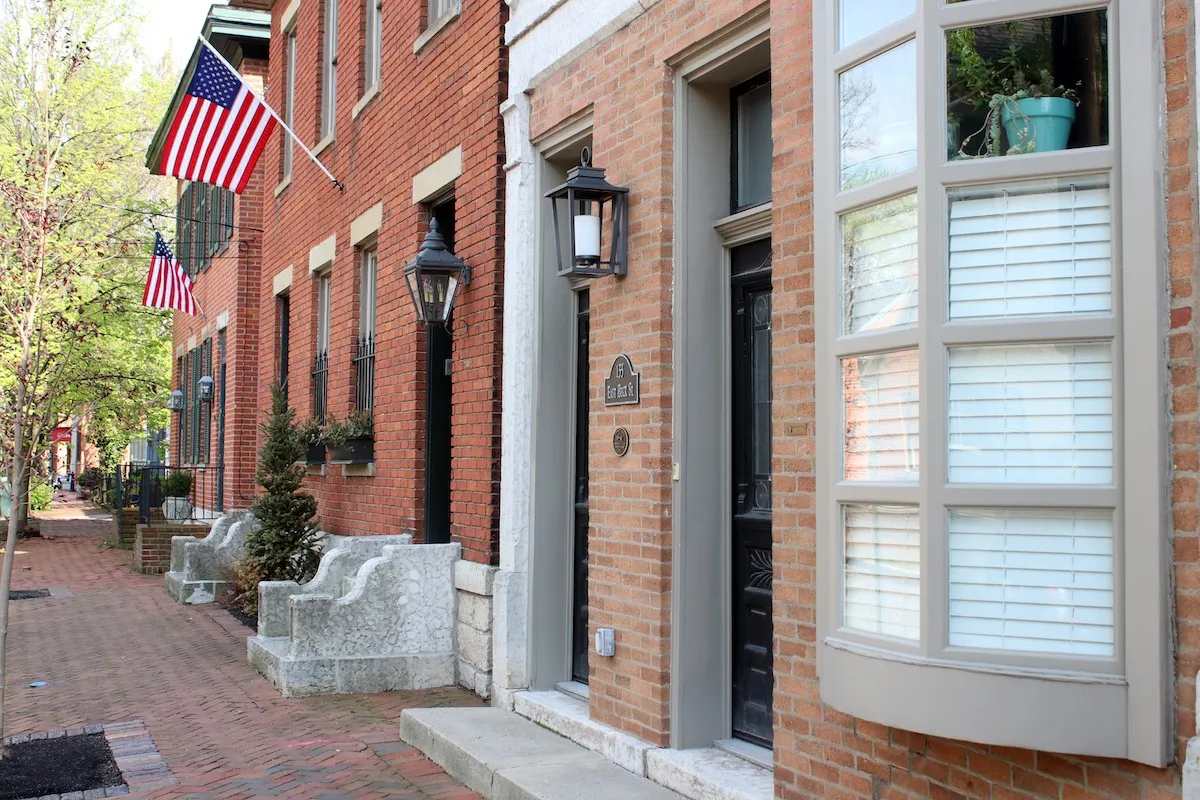
There’s plenty to do in the state capital of Ohio—see a Buckeyes game, walk around the Scioto Mile, get lunch at the North Market. But old house lovers will want to make a beeline for German Village.
Just south of downtown Columbus, this historic neighborhood was built by German settlers in the mid-1800s and has more than 1,000 buildings. According to Leah Berger, PR manager at Experience Columbus, “[the] lovingly restored brick houses, shops, streets, and sidewalks are full of historic charm.”
Each June, you can look inside some of these homes on the German Village Society’s Annual Haus Und Garten Tour.
Another fun (and tasty!) way to explore German Village is on a food tour. Not only will you get to sample German fare, but you’ll also learn about the cultural and architectural history of the neighborhood.
Berger also suggests visiting Victorian Village, “a largely residential area right outside of the buzzing Short North Arts District known, as its name suggests, for outstanding Victorian architecture.” She says the most notable home is the Sells Mansion, “known locally as the Circus House as it was built by one of the brothers who owned the Sells Circus.”
RELATED: The 12 Quirkiest Small Towns in the U.S.
13
Galena, Illinois
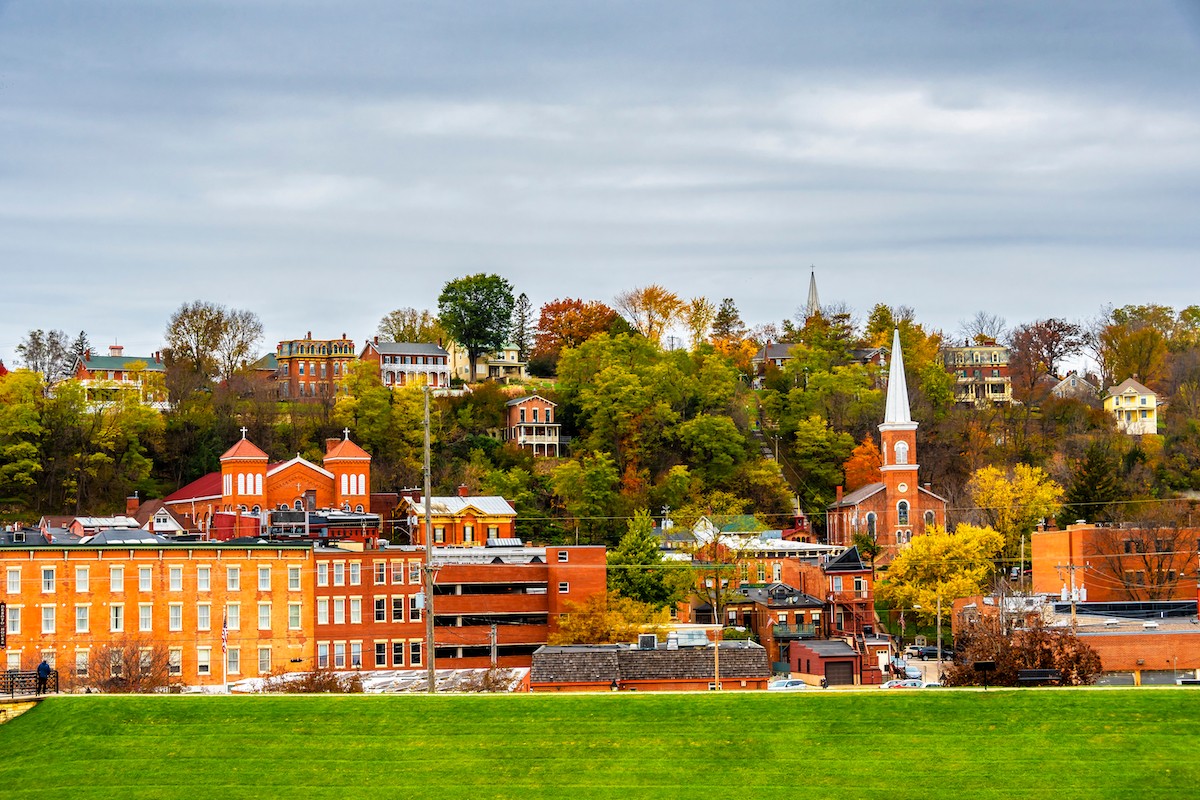
About three hours northwest of Chicago, near the Wisconsin and Iowa borders, is a charming small town you’ll want to know about.
“Galena is a postcard vacation for history lovers and luxury vacation seekers alike. The historic downtown architecture has been 80 percent preserved and the hilly scenery along the Mississippi River creates a picture-perfect view,” say Alex and Geoff Arroyo-Karnish, former Manhattanites who moved to the Illinois town in 2019 to manage a historic inn and now own and operate the Galena Bakehouse.
Start by walking along Main Street, which feels like stepping back in time. Then, Alex and Geoff suggest the one-hour trolley tour, which takes you through Galena’s historic district.
They say you must also visit the Grant Home, the 19th-century residence of the 18th U.S. president, Ulysses S. Grant. “Grant lived in Galena pre-war while he worked in his father’s leather store. After the war, the entire town gifted him a furnished home which you can tour today,” they explain.
14
Pacific Grove, California
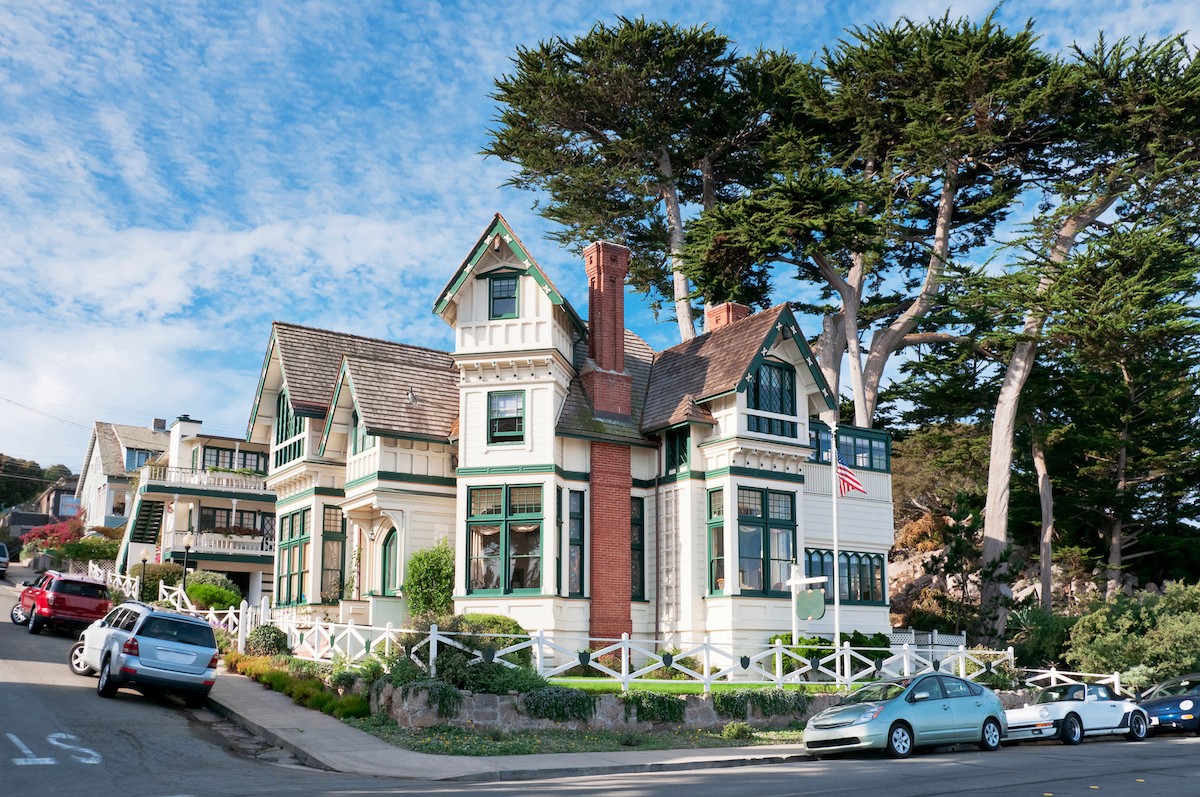
For a west coast old house experience, drive along the scenic Pacific Coast Highway until you reach Monterrey. “The oceanfront town, and its neighboring Pacific Grove, are filled with ornate Victorians and detailed Queen Annes. Sit on the front porch of a historic inn while you watch the seals bob in and out of the ocean!” says Cristiana Peña, social media manager for CIRCA Old Houses.
Pacific Grove was founded in 1875 “as a Methodist Christian Seaside Retreat,” according to the Heritage Society of Pacific Grove. At the time, “sections of the city were subdivided into 30′ x 60′ lots to be used as tent sites for seasonal (summertime) visitors.” Over the years, many were converted to fully-walled, year-round homes that you can see today.
Lindsay Horton, social media specialist and founder of Social Monterey, notes that Pacific Grove alone has over 1,350 historic structures and says the perfect way to learn about some of them is by foot. “The Heritage Society of Pacific Grove has a self-guided tour featuring 350 historic homes in 11 of Pacific Grove’s oldest neighborhoods.”
For a unique place to stay, John Steinbeck’s former cottage is available to rent (for a 30-night minimum) on Airbnb, shares local resident and author R. M. S. Thornton. It was built in the 1920s in the traditional tent style, and Steinbeck lived there in the 1940s.
15
Madison, Wisconsin
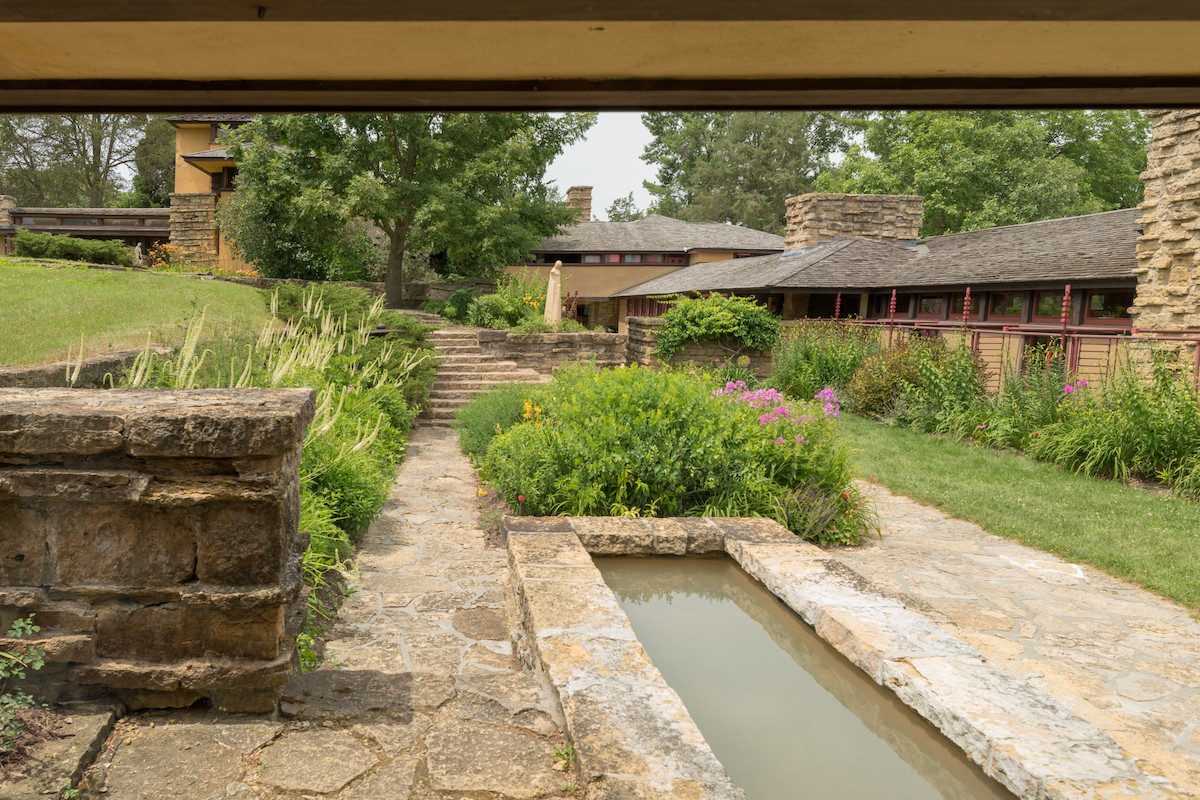
Wisconsin’s capital city has plenty to offer in terms of beer, cheese, and waterfront activities. It also holds a treasure trove of homes and civic buildings designed by “America’s architect,” Frank Lloyd Wright.
“Wright lived in Madison in his adolescence and in nearby Spring Green during the height of his fame, and you can find his low-slung Prairie-style houses and grand public buildings scattered throughout the city,” according to the National Trust for Historic Preservation. While many of the homes are still private residences, you can certainly stroll past them and enjoy their exterior beauty.
As for interior tours in Madison, don’t miss the Unitarian Meeting House and Monona Terrace Community and Convention Center.
And just outside Madison is Taliesin, what many might consider Wright’s pièce de résistance. Wright built this home for himself and lived it in for 50 years, even adapting it to function as a studio for budding architects. Today, you can tour the complex.
And if you’re willing to venture farther afield, you can travel from Madison to Milwaukee via the Frank Lloyd Wright Trail to see even more of the architect’s prolific work, including the SC Johnson Administration Building in Racine, the Johnson Foundation at Wingspread, and Burnham Block in Milwaukee, an early example of affordable housing.
16
Duluth, Minnesota
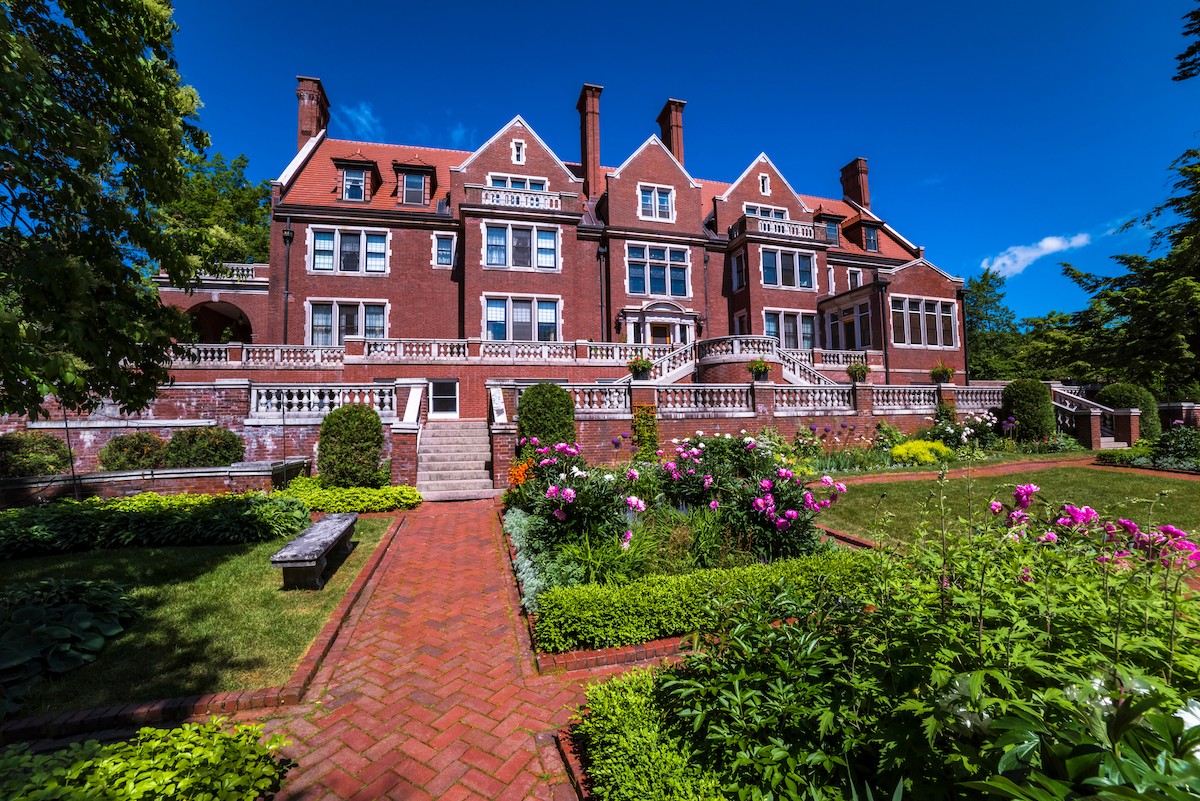
When you think of turn-of-the-century money, you probably envision the railroad tycoons of New York City. But according to Wolters, it’s thought that Duluth, Minnesota, “had more millionaires per capita than any city in America” at this time—which “led to some seriously stately mansions, several of which are open to the public.”
She says the Glensheen Historic Estate, a “Jacobean gem” built for an iron-mining family, is probably the most well-known. Located right on Lake Superior, the 39-room mansion is completely intact, from the owner’s top hat to his wife’s letters and bedsheets. Tours include the 12-acre grounds.
Wolters also suggests walking around the East End neighborhood, for which the Duluth Preservation Alliance published a digital walking tour of more than 200 historic homes in a 24-block area.
RELATED: 13 Small U.S. Towns That Feel Like the Wild West
17
Seattle, Washington
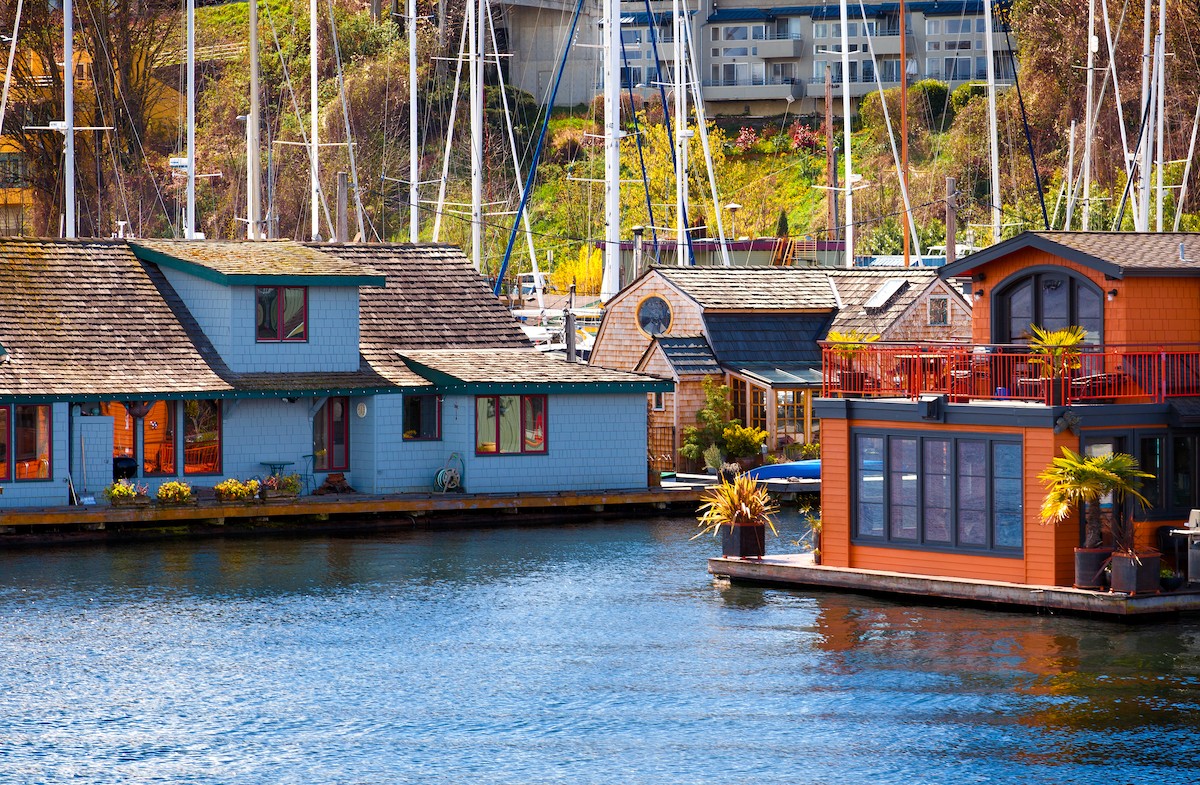
If Craftsman-style houses are what you’re hoping to see, there’s no question that you must visit Seattle.
“Much of Seattle bloomed at the same time the all-American style made its way onto the architecture scene,” explains Wolters. “Being situated in a timber-rich area made for a perfect marriage.”
Seattle proper has a total of eight historic districts, but the suburbs of Wallingford, Ravenna, and Mount Baker are where you’ll want to walk around to see Craftsmans in all their glory, notes local radio station KUOW.
Pioneer Square is also worth visiting, as it has “one of the nation’s best surviving collections of Romanesque Revival style urban architecture,” according to the Seattle Department of Neighborhoods. While here, don’t miss out on an “underground tour” of the subterranean passages that once connected downtown Seattle.
But there’s another unique type of residence you can’t miss in Seattle, according to Wolters—the houseboat. And what better way to experience this than by renting one of them for your stay? Don’t forget to try to get a glimpse of the famous Sleepless in Seattle floating home.
18
Annapolis, Maryland

Maryland’s capital city is “a hidden gem for anyone who adores beautiful historic homes and the stories they tell,” shares Das. She says you’ll get to experience a mix of maritime heritage, well-preserved Colonial architecture, and “some of the best crab cakes in the Chesapeake!”
“The heart of Annapolis is its Historic District, which contains more original 18th-century buildings than any other area in the country,” she explains. “Walking through the district feels like stepping back in time, with its cobblestone streets and historic homes featuring beautiful woodwork, charming shutters, and authentic colonial colors.”
Also on Das’ Annapolis agenda are the William Paca House, “a prime example of Georgian architecture [that] features a beautifully restored garden” (fun fact: Paca was a signer of the Declaration of Independence!), and the Hammond Harmond house, “an Anglo-Palladian home famous for its symmetrical design and elegant detail.”
A fun way to experience this city is on a walking tour. The company Watermark offers eight different options, from a Colonial Annapolis tour to a ghost tour to a boat cruise, all led by guides in period attire.
19
Concord, Massachusetts
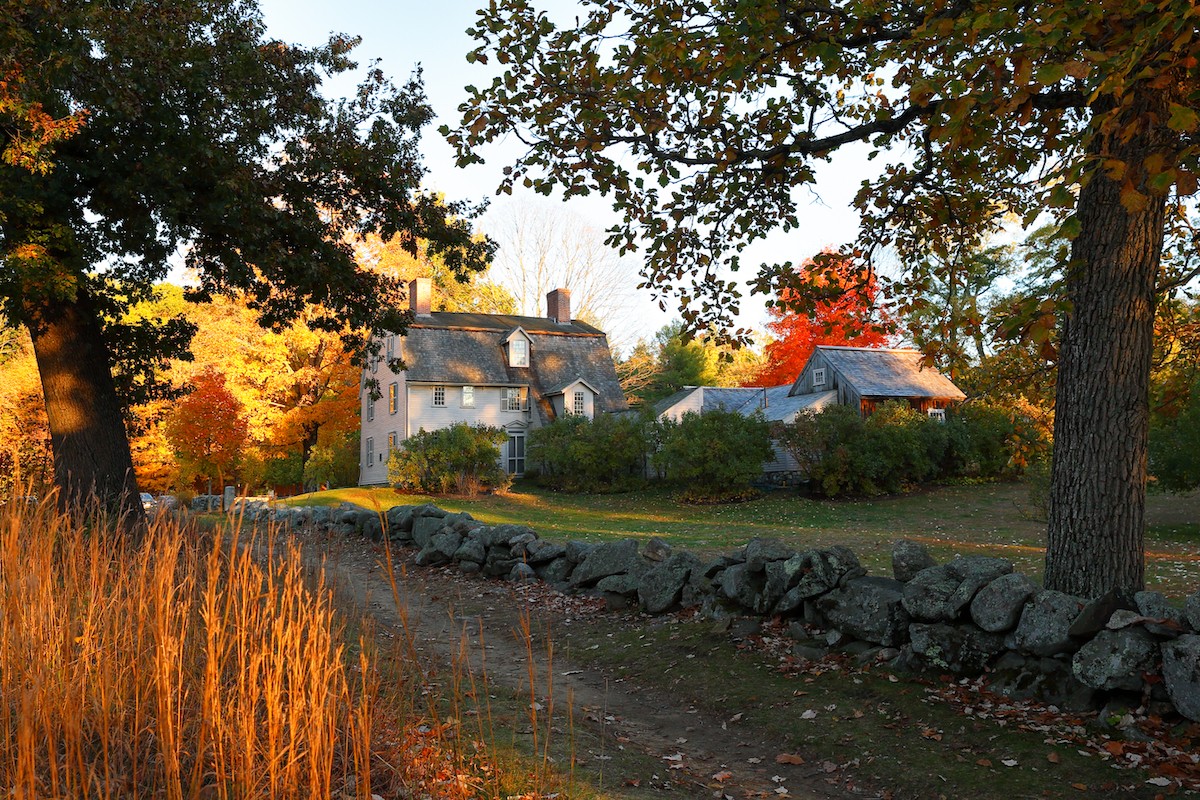
Looking for a literary angle to your old-house excursion? Look no further than Concord, Massachusetts, where you can tour house museums related to famous authors, according to Keri Baugh, founder of the family travel blog Bon Voyage With Kids.
On the same street, you’ll find the Orchard House, where Louisa May Alcott wrote and set Little Women, the former home of transcendentalist writer Ralph Waldo Emerson, and The Wayside, which at times was home to Nathaniel Hawthorne, Louisa May Alcott, and Harriett Lothrop (pen name Margaret Sidney), who wrote the children’s book series Five Little Peppers.
“Nearby is another house, The Old Manse, where Hawthorne lived and wrote the story collection Mosses From an Old Manse,” adds Elizabeth Bornstein, creator of the literary-inspired travel blog A Suitcase Full of Books. Ralph Waldo Emerson also lived here for a time and “drafted his influential essay Nature in an upstairs study,” according to The Trustees of Reservations. Plus, when Hawthirbe got married on the property, Henry David Thoreau planted a vegetable garden to honor the occasion.
Extend your trip by visiting the neighboring town of Lexington. “It is the site where the first shots of the American Revolution were fired so it is very significant,” explains Baugh. “Many of the historic homes in town carry a plaque naming whose house it once was, a person with no doubt a significant impact on American history.”
20
Hartford, Connecticut
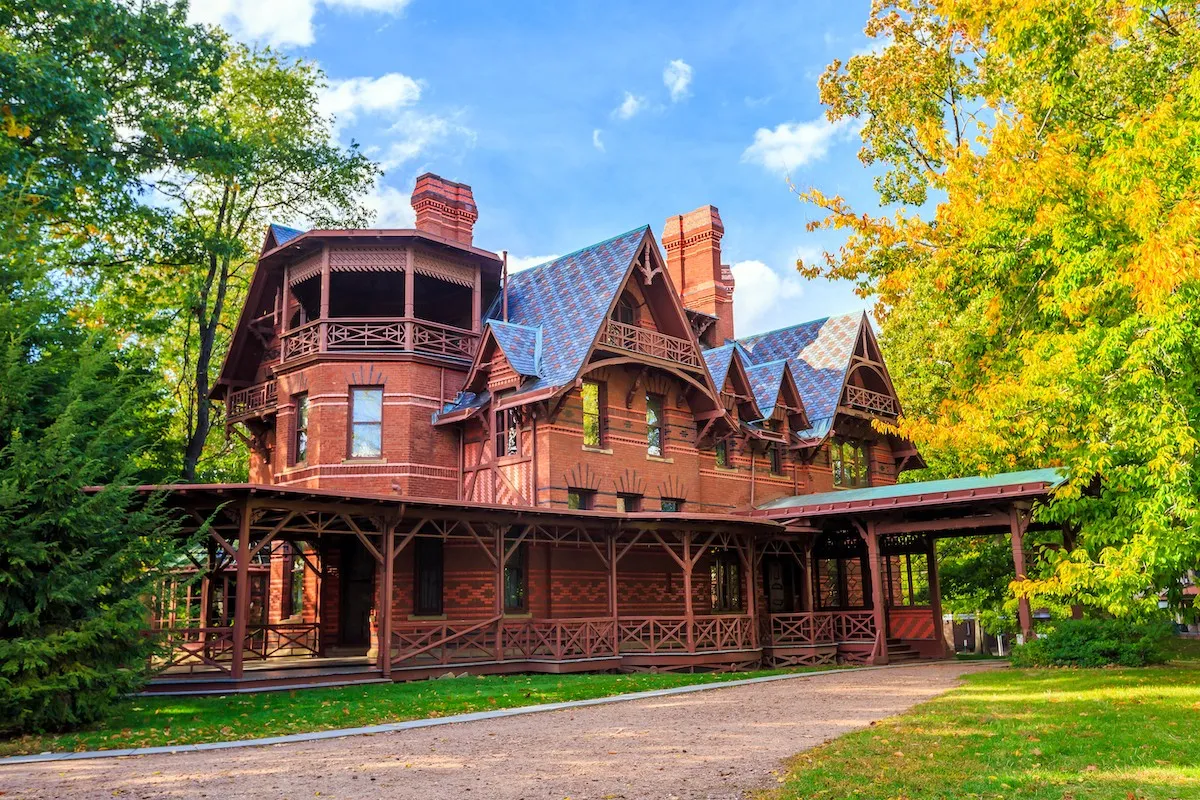
Another literary locale is Hartford, Connecticut, where you can tour the Mark Twain House, “a remarkable example of American Gothic architecture,” according to Das.
“The interior is as visually impressive as its exterior, marked by exquisite decorative stenciling, carved woodwork, and grand fireplaces,” she explains. “The design reflects Twain’s taste and status at the peak of his success.”
Just steps away, you can also visit the Harriet Beecher Stowe Center. “This Victorian-style home where the famous author of Uncle Tom’s Cabin lived isn’t just a house; it’s a statement on social justice, filled with history and decorated with period furniture that encapsulates the era’s spirit,” Das says.
She also recommends strolling through Hartford’s West End neighborhood, which “maintains a vibrant community atmosphere, with local cafes, small shops, and a calendar filled with cultural activities and events.” The historic houses here range in style from “grand Victorian mansions and stately Tudor homes to charming Colonial Revivals,” she adds.